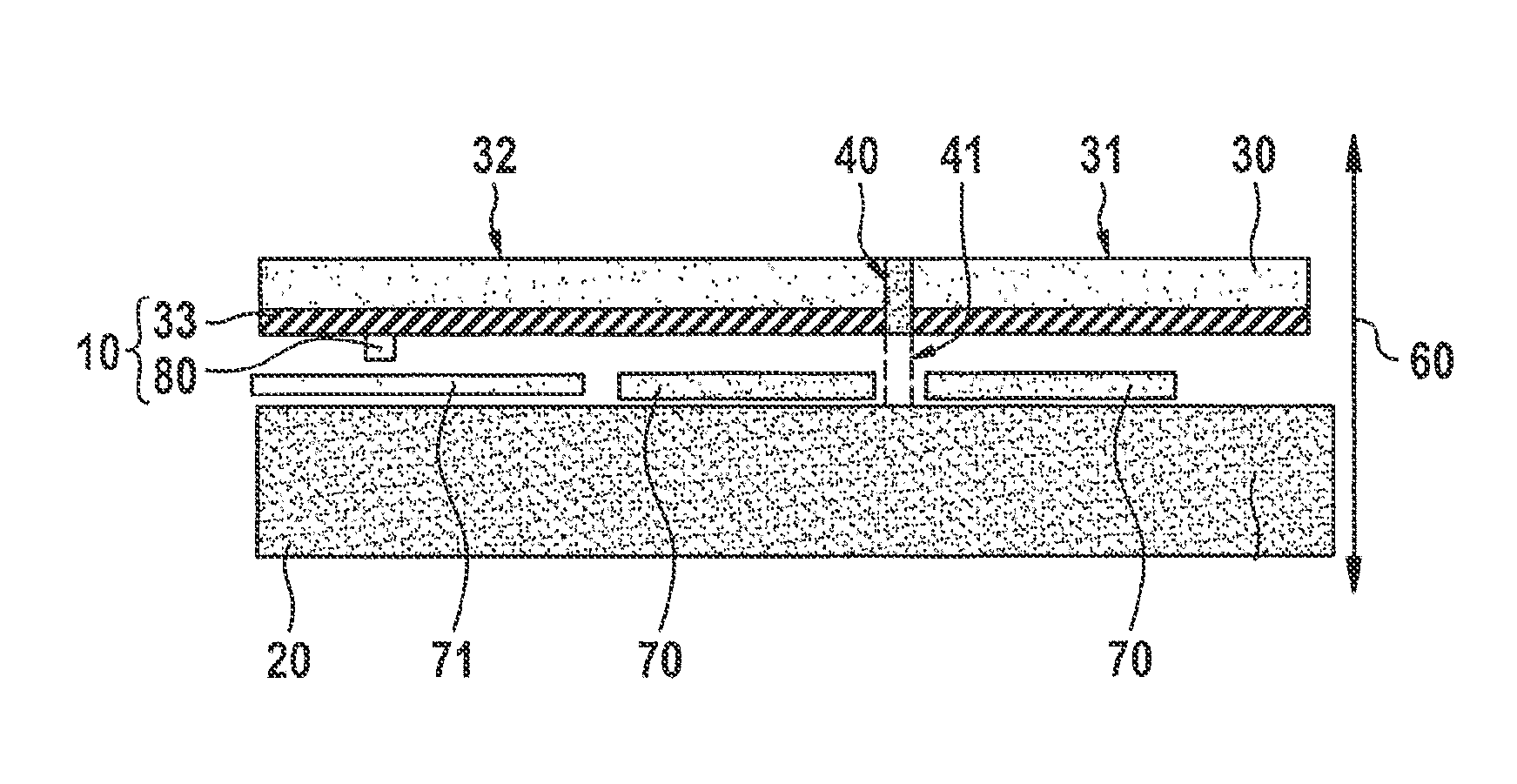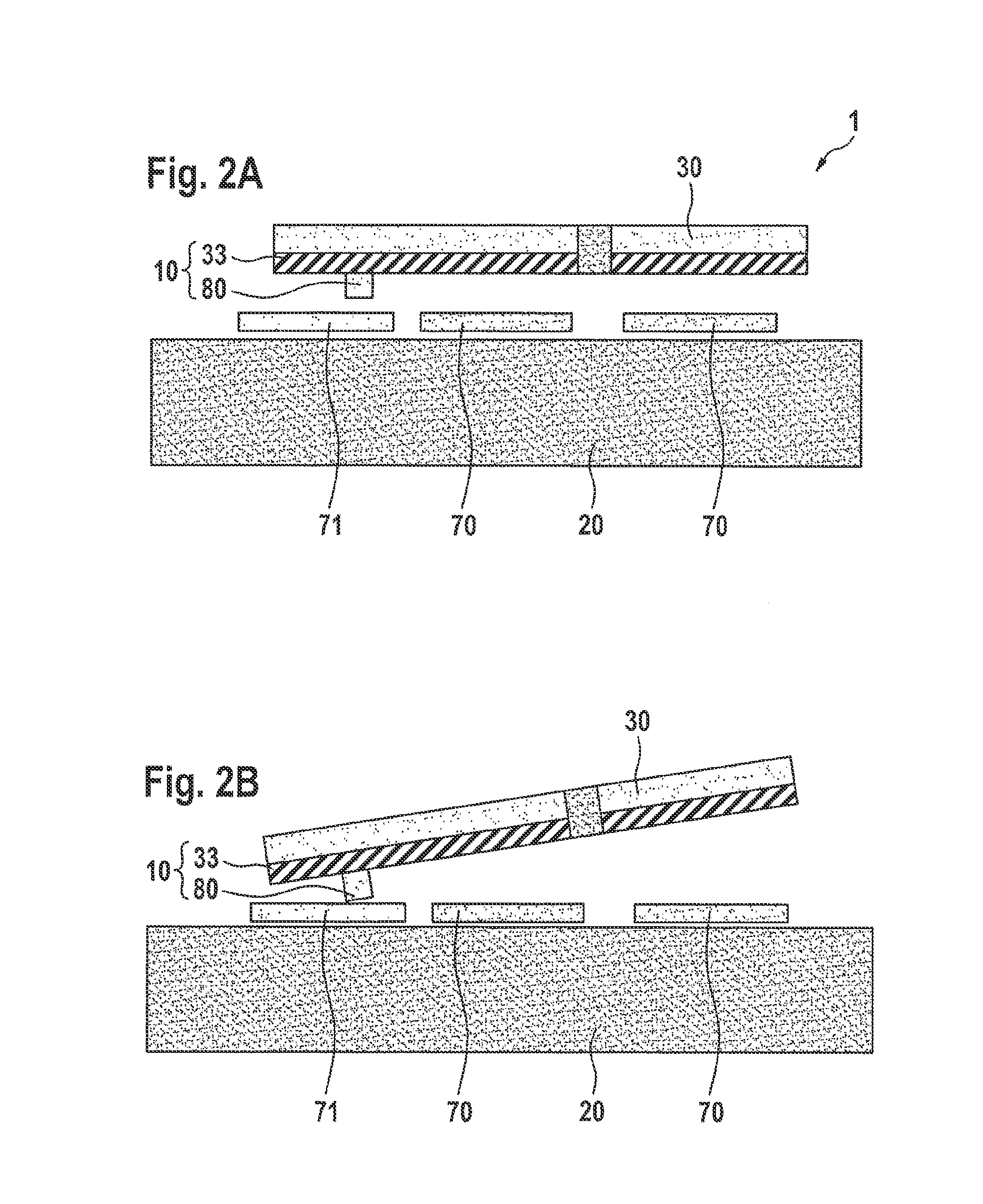Flexible stop for an acceleration sensor
a sensor and flexible technology, applied in the direction of acceleration measurement using interia forces, microstructural devices, microstructure technology, etc., can solve the problems of mechanical damage to the structure, the proposed structure has a relatively high space requirement, and the cost so as to achieve the effect of high space requirement, small sensor core size, and the expense of precious space in the sensor cor
- Summary
- Abstract
- Description
- Claims
- Application Information
AI Technical Summary
Benefits of technology
Problems solved by technology
Method used
Image
Examples
Embodiment Construction
[0025]FIG. 1A and FIG. 1B show a first specific embodiment of a sensor system 1 in a schematic top view and a schematic lateral view. Sensor system 1 includes a substrate 20 and a seismic mass 30, seismic mass 30 taking the form of a rocker, that is, seismic mass 30 being joined elastically to substrate 20 via a formation 41 with the aid of a torsion-spring system 40 disposed centrally in terms of the seismic mass, and being deflectable relative to substrate 20 about a torsion axis 50. Seismic mass 30 has a first crossbar 31 and a second crossbar 32 specific to torsion axis 50, second crossbar 32 being longer than first crossbar 31, an uneven mass distribution thereby ensuing in the case of seismic mass 30 relative to torsion axis 50.
[0026]As a result of the uneven mass distribution, in response to an acceleration of sensor system 1 in a direction perpendicular to substrate 20, i.e., parallel to z-direction 60 indicated in FIG. 1B, seismic mass 30 undergoes a moment of rotation abou...
PUM
 Login to View More
Login to View More Abstract
Description
Claims
Application Information
 Login to View More
Login to View More - R&D
- Intellectual Property
- Life Sciences
- Materials
- Tech Scout
- Unparalleled Data Quality
- Higher Quality Content
- 60% Fewer Hallucinations
Browse by: Latest US Patents, China's latest patents, Technical Efficacy Thesaurus, Application Domain, Technology Topic, Popular Technical Reports.
© 2025 PatSnap. All rights reserved.Legal|Privacy policy|Modern Slavery Act Transparency Statement|Sitemap|About US| Contact US: help@patsnap.com



